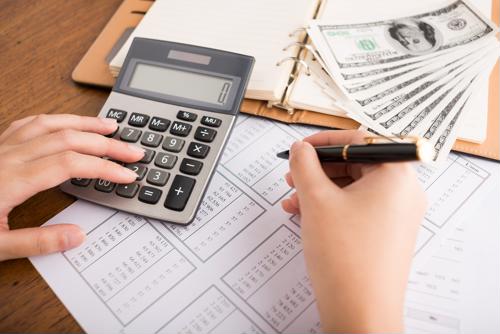
With interest rates remaining low in 2020 — and the Federal Market Open Committee (FOMC) projecting enduringly low rates into 2023 — it might be time to look at savings and investment vehicles in a new light.
Certificates of deposit (CDs) are often thought of as low-risk investments, provided they generate positive returns over a period of time. And those are two key elements — among others — to consider, especially in a low-rate environment: time and returns.
In general, if the CD rates you currently enjoy do not fluctuate, you at least are guaranteed a predictable stream of income. On the other hand, if you have a floating rate — or if inflation begins to put pressure on purchasing power — CD returns could functionally be minimal.
How do benchmark rates impact CDs?
Banks and credit unions can offer competing interest rates to attract deposits. On the whole, though, these rates move in line with benchmark interest rates.
Should the federal funds rate — the typical industry standard for lenders — stay low for a long time, financial institutions will similarly offer lower interest rates on CDs, at least relative to high-rate environments. This means CDs with higher rates are more profitable to you.
Assessing the time horizon of rates
If interest rates on CDs remain low at a given financial institution — as benchmarked against the federal funds rate — a number of things can happen:
- Interest accrued could be minimal, depending on original deposit amount and the exact rate at which a CD term was agreed upon.
- You could have a stable investment vehicle in which to stash funds, until rates rise again or other investment options open up. No one has ever lost money on an FDIC-backed CD, according to the FDIC.
- You'd still likely be earning more from a CD than a conventional savings account, making CDs a productive savings vehicle under the conditions.
That's why it's important to consider how long rates might remain low, because they likely won't stay that way across all financial institutions over any, say, 10-year period. And if economic conditions change, and other options like stocks or ETFs become more lucrative, it may not be easy or financially sensible to liquidate your CD to quickly jump into a new investment.
Laddering your CDs, as well as keeping other funds on hand for well-timed investments, is key to making the most of your current CDs.
Other factors impacting CD returns
CD rates are determined by a number of factors and are specific to each individual lender. Consider:
- Rate environment: Have low rates been in place for several years, and are they primed to remain so?
- Lender environment: What are other lenders offering? Some might have introductory teaser rates or creative solutions for generating new deposits.
- Deposit amount: Interest grows faster and larger if the initial deposit amount is higher.
- Account type: CDs can be:
- Fixed: rates will be constant up until the CD matures.
- Adjustable: you and your lender agree to change the rate before maturation.
- Variable: the rate varies over time based on benchmark rates.
- Term length: CDs are usually multiyear investments, so your money could be locked away for, say, 10 years or just 2 years, depending on the one you choose.
For more information on CDs, and to find one that's right for you, contact The Federal Savings Bank today.
This information is intended for educational purposes only. Products and interest rates subject to change without notice. Loan products are subject to credit approval and include terms and conditions, fees and other costs. Terms and conditions may apply. Property insurance is required on all loans secured by property. VA loan products are subject to VA eligibility requirements. Adjustable Rate Mortgage (ARM) interest rates and monthly payment are subject to adjustment. Upon submission of a full application, a mortgage banker will review and provide you with the terms, conditions, disclosures, and additional details on the interest rates that apply to you individual situation.

